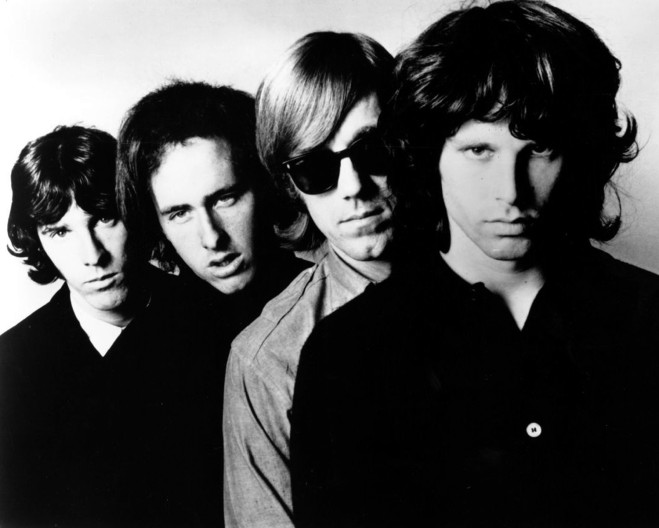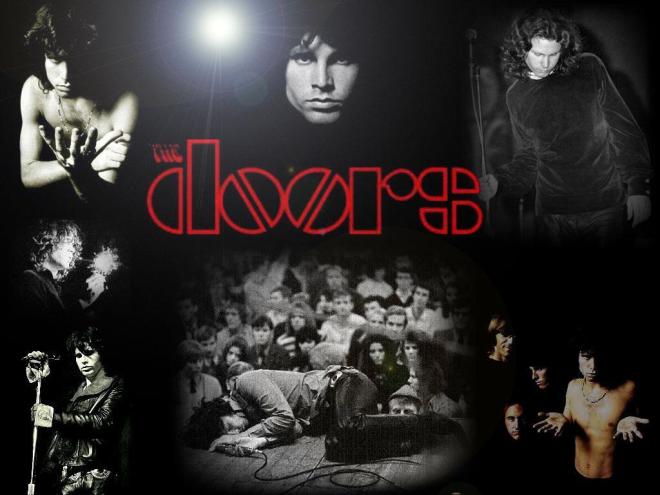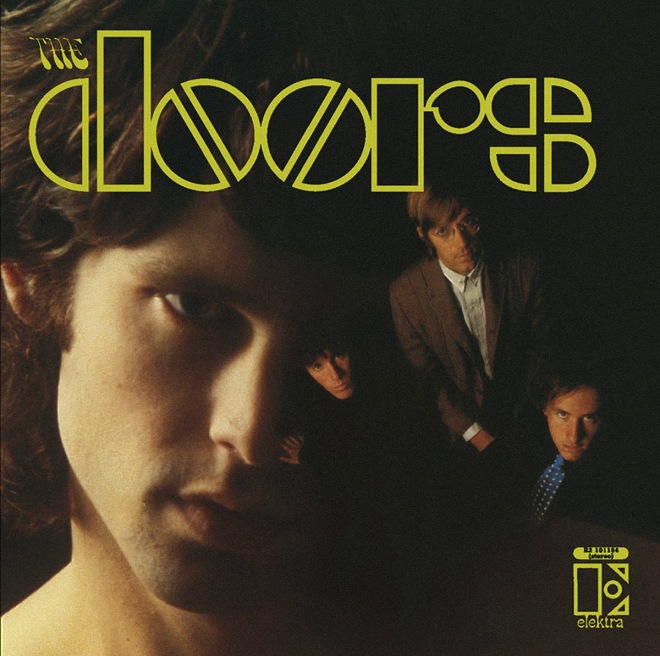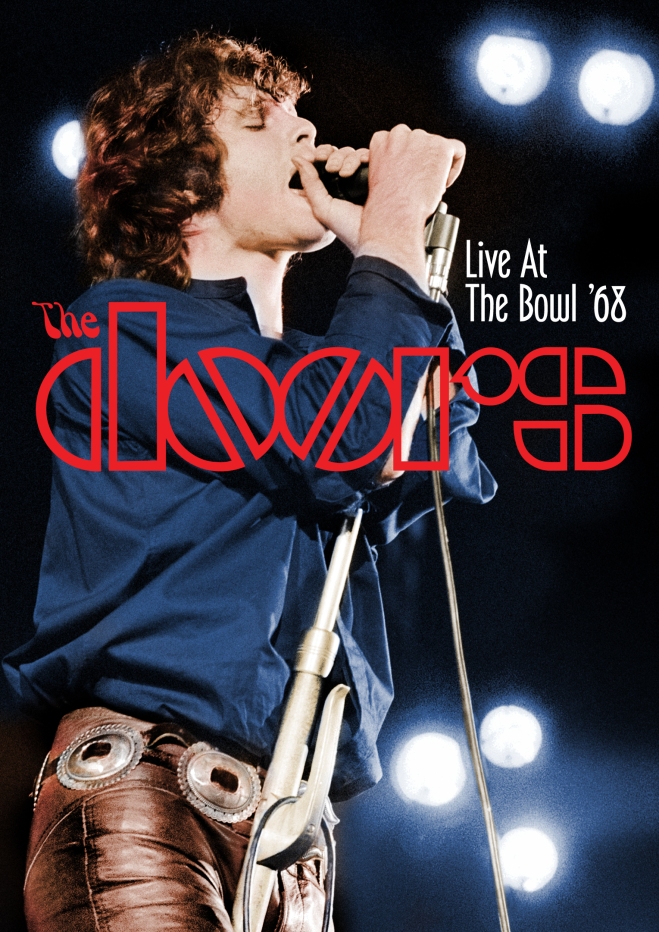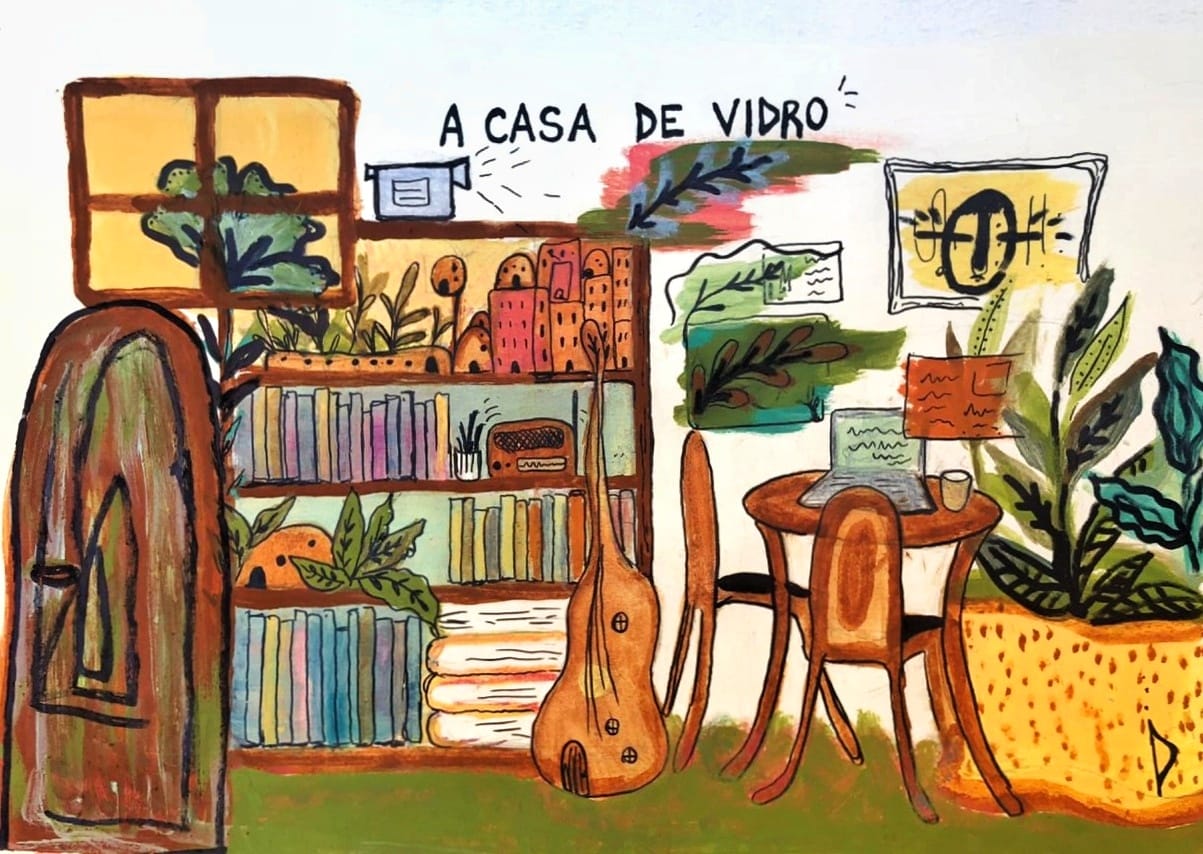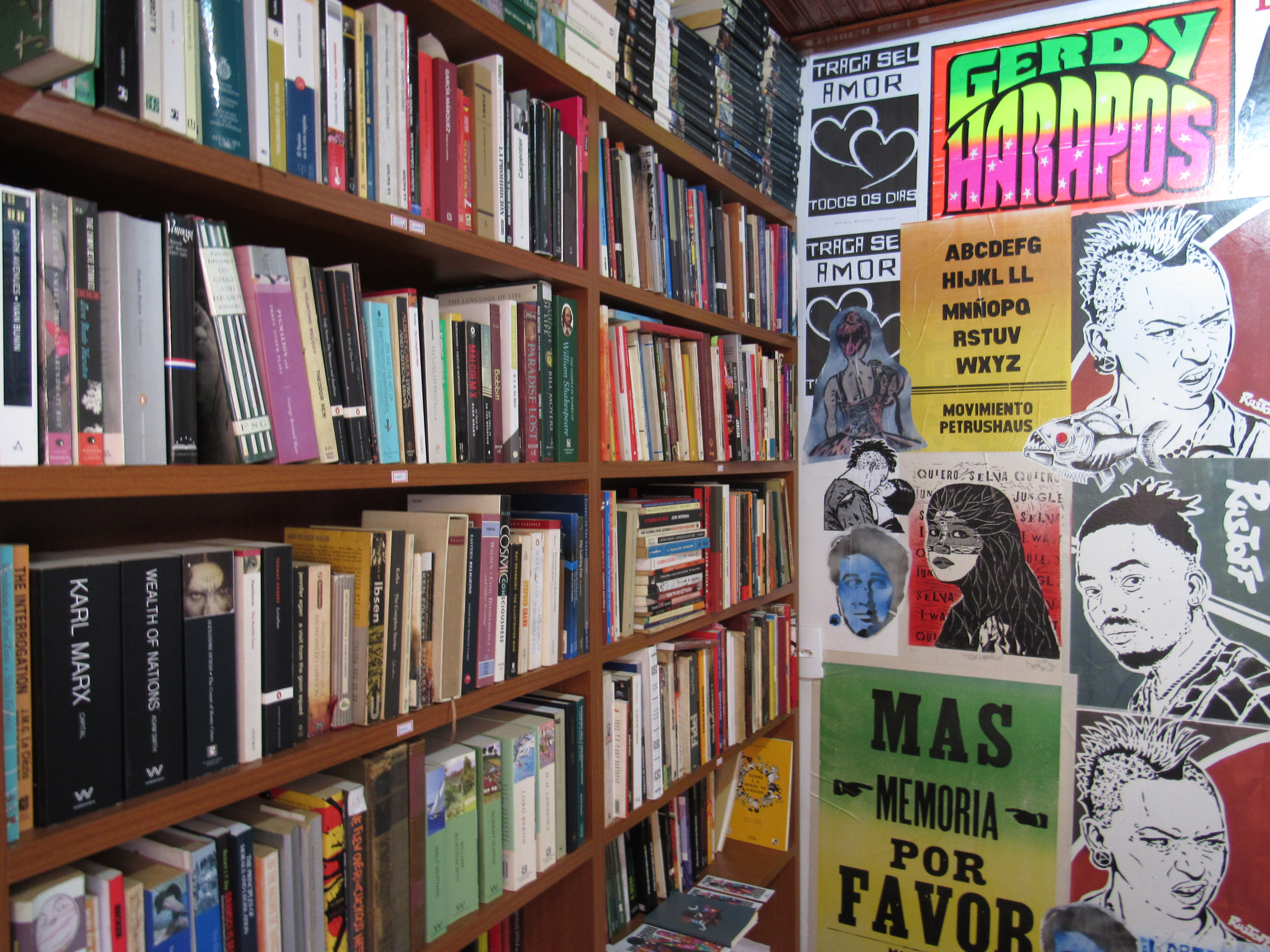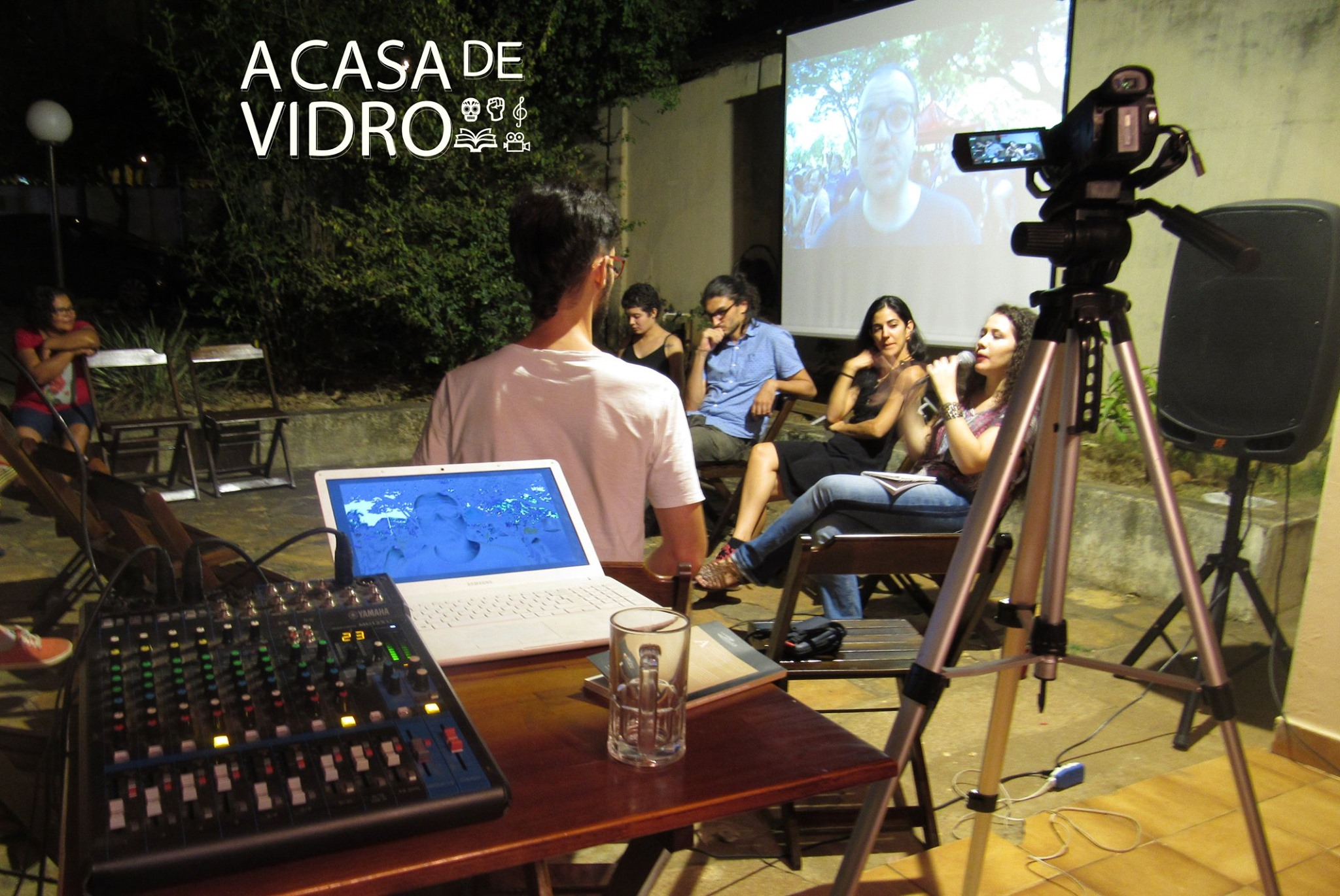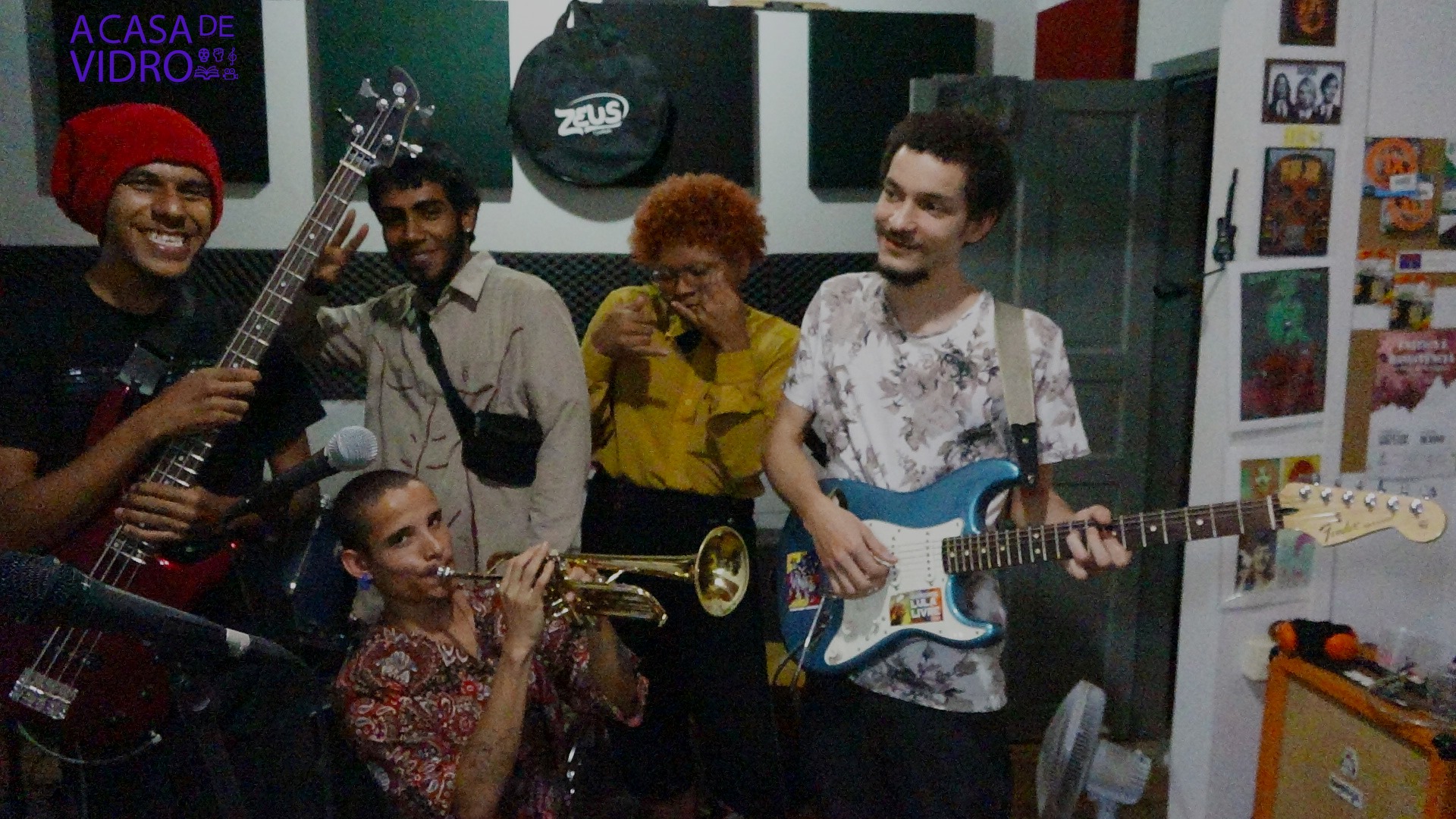Unhappy Endings of the Sixties: The Doors by Greil Marcus
“In 1968 dread was the currency. It was what kept you up all night, and not just the night Bobby Kennedy was shot… Dread was why every day could feel like a trap. (…) The feeling that the country was coming apart – that, for what looked and felt like a casually genocidal war in Vietnam, the country had commited crimes so great they could not be paid, that the country deserved to live out its time in its own ruins – was so visceral that the presidential election felt like a sideshow. In this setting, the Doors were a presence. They were a band people felt they had to see – not to learn, to find out, to hear the message, to get the truth, but to be in the presence of a group of people who appeared to accept the present moment at face value. In their whole demeanor – unsmiling, no rock’n’roll sneer but a performance of mistrust and doubt – they didn’t promise happy endings. Their best songs said happy endings weren’t interesting, and they weren’t deserved.” (GREIL MARCUS, The Doors: A Lifetime of Listening to 5 Mean Years, pgs. 95-96)
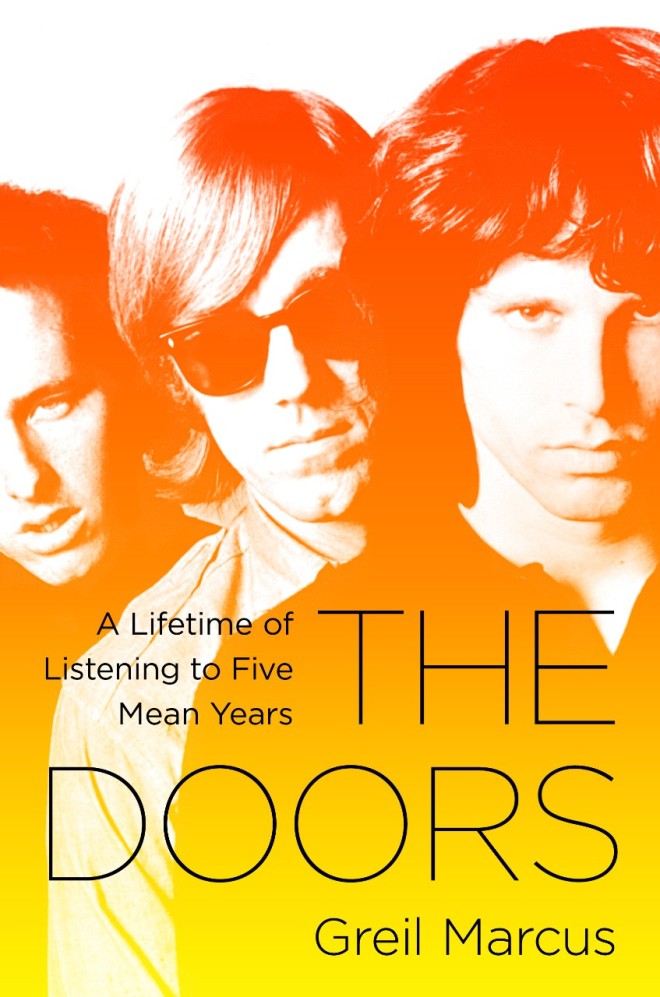 The least I can say in praise of the writings of Mr Greil Marcus is this: they expanded my horizons on music, they made me understand music’s presence inside culture, its historical significance, or, to sum things up, the context in which music arises and acts. I wouldn’t call Greil Marcus only a music critic, the one who judges aesthetically upon the merits or vices of certain musical productions. Greil Marcus is also some sort of bold trans-disciplinary intellectual maverick, who knows no fixed boundaries or forbidden signs keeping him from moving all around between different “fields” – like History, Sociology, Psychology, Literature. I’d call him an historian of culture, someone who writes about our present as a culture from an historical perspective, and also a gifted “painter of cultural landscapes”. He’s certainly among the most well-informed and intelligent music critics I’ve read, and he’s certainly – together with guys such as Lester Bangs, Simon Reynolds and Nick Kent – one of the greatest thinkers of pop music and its underground currents. With his prose, Greil Marcus seems to paint portraits of our Western civilization much more than merely commenting on artists – such as Bob Dylan or Van Morrisson – we has written so much about. To paint the big picture, he doesn’t shy away from discussing movies – like Wild in The Streets or Pump Up The Volume – or to quote Thomas Pynchon’s novels in order to set the mood for his musings on Jim Morrison.
The least I can say in praise of the writings of Mr Greil Marcus is this: they expanded my horizons on music, they made me understand music’s presence inside culture, its historical significance, or, to sum things up, the context in which music arises and acts. I wouldn’t call Greil Marcus only a music critic, the one who judges aesthetically upon the merits or vices of certain musical productions. Greil Marcus is also some sort of bold trans-disciplinary intellectual maverick, who knows no fixed boundaries or forbidden signs keeping him from moving all around between different “fields” – like History, Sociology, Psychology, Literature. I’d call him an historian of culture, someone who writes about our present as a culture from an historical perspective, and also a gifted “painter of cultural landscapes”. He’s certainly among the most well-informed and intelligent music critics I’ve read, and he’s certainly – together with guys such as Lester Bangs, Simon Reynolds and Nick Kent – one of the greatest thinkers of pop music and its underground currents. With his prose, Greil Marcus seems to paint portraits of our Western civilization much more than merely commenting on artists – such as Bob Dylan or Van Morrisson – we has written so much about. To paint the big picture, he doesn’t shy away from discussing movies – like Wild in The Streets or Pump Up The Volume – or to quote Thomas Pynchon’s novels in order to set the mood for his musings on Jim Morrison.
My appreciation of The Doors has been greatly improved, and my horizons about them have been radically expanded, after I’ve read Greil Marcus impressive book about them. It’s incredibly tought-provoking. Suddenly The Doors were not only a rock and roll band (and a damn good one!), but also a symptom of an historical epoch. A symbol of the dark side of the Sixties. A “dystopic” band, outstranged in an era of Utopia was also an important part of the cultural landscape. The Doors were like a psycho who stabs in the heart the flowery dreams of the peace-and-lovin’, tree-hugging, pot-smoking acid-heads known as “Hippies”. The Doors were more like dark flowers bursting out of a swampy, bleak age: that of the napalm bombing and other techniques of genocide used against Vietnam (and later Cambodia); of Charles Manson’s cult killing frenzy that sent the whole Los Angeles drowning in dread; and, as “The Other Side Of Woodstock”, the deaths of Altamont…
After reading this book by Marcus, I began wondering: perhaps the task of the music critic isn’t merely passing judgement – either cherishing or condemning the artists he’s writing about – but instead attempting to share with his readers the big picture, the cultural context in which some musical phenomenon emerges. That’s what Marcus accomplishes when he paints the whole Zeitgeist that surrounded The Doors: we are reminded of some of the tragedies of those times in Los Angeles (like the bloodshed caused by Charles Mansonites), which appear as the dark side of the Flower Power utopia. The Door are “riders on the storm”, like “dogs without a bone”, and there are killers on the roads (and also inside the White House and the Pentagon…).
[youtube id=http://youtu.be/k9o78-f2mIM]
In Marcus’ pages, we journey through some of Jim Morrison’s most extreme behavioural excesses. Like that fateful night in Miami when he was arrested for his use of obscene language and offensive nudity (some say he only pretended to jerk off… not a big deal, and certainly not a thing that should get anyone in jail!). He’s certainly not the first rock’n’roller, nor will the last, to be caged like a wild beast by authorities who felt their sacred institutions had been mocked and debunked by these subversive artists that needed to be spanked into silence.
Marcus also makes the reader imagine Jim Morrison in the process of drinking himself to death, while he struggles to write the soundtrack for the agony of a drunken swan who has consumed too much booze and too much Rimbaud. We are taken in a roller-coaster ride on the wings of The Doors’ poetry and music, where one can sense a celebration of Dyonisian eroticism mixed with an obssession with Death and Psychosis. We are invited to understand the band as an occurrence in the history of culture that continues on a path treaded not only in rock’n’roll, but within a broader cultural landscape that includes poets, playwriters and mystics:
“The Doors saw themselves as much in the tradition of fine art – a tradition within the tradition, the stream of art maudit that carried Blake, Poe, Baudelaire, Rimbaud, Nietzsche, Jarry, Buñuel, Artaud, and Céline to their doorsteps – as in the tradition of rock’n’roll. For them rock’n’roll itself was already a tradition, full of heroes and martyrs…” – GREIL MARCUS, A lifetime of listening to five mean years – The Doors (New York: Public Affairs, 2011, Pg. 132)
The Doors were surely innovators in the sixties, both musically and lyrically, and Greil Marcus points out some of the elements that made Jim Morrison, Robby Krieger, Ray Manzakek and John Densmore an outstanding cultural phenomenon. When “Light My Fire” exploded, skyrocketing to the top of the charts, and the band’s debut album was released to wide-spread impact on the U.S. rock scene, most people knew that this guys weren’t deemed to become a one hit wonder to be forgotten in the next summer. They sounded more subversive (“Break on Through” antecipates The Sex Pistols) and less optimistic than most “hippie bands” that celebrated Peace & Love. Even tough The Doors also celebrated consciouness expansion psychedelics (starting with the name of the band, a tribute to Aldous Huxley’s The Doors of Perception), there was also a quite bleak and scary mood in some of the groups’ songs, like the nightmarish explorations of the darkest corners of the human mind in “The End” (a song about, among other things, a psycho who acts out Freud’s Oedipus Complex, kills his father, and… you know what!). In the following words, Marcus describes a moment in the The Doors’ path where darkness was closing in and the band was falling apart:
“When The Doors recorded ‘Roadhouse Blues’ in November 1969, Morrison’s arrest in Miami the previous March, the three months of concerts cancelled everywhere in the country that followed, the felony trial looming in the next year, the likelihood of prison, and after that the end of the band, were only the most obvious demons. The specter of the Manson slaughter hung over every Hollywood icon, hanger-on, or rock’n’roll musician as if it were L.A.’s Vietnam. Everyone – people who had been in Manson’s orbit, like Neil Young, or anyone who knew someone who knew someone who had, which was everyone – believed there was a hit list, held by those Mansonites waiting patiently, on the outside, for the word of the messiah. There were reasons to believe that the Manson bands were just a first brigade – a lumpen avant-garde, you could say – for a web of cults biding their time for years, since the late 1940s, some said, when the British sex-magick maven Aleister Crowley, John Parsons, the founder of the Jet Propulsion Laboratory, and L. Ron Hubbard practiced Satanist rituals in Pasadena, determined to summon the whore of Babylon and conceive a living Antichrist.” (MARCUS, 2011, pg. 156-57)
We all know that The Doors’ career has no happy ending: the music is over when Jim Morrison, 27 years old, is found dead in a bathtub in Paris. To understand what went wrong, Greil Marcus explores the lyrics and poems of The Doors’ lead-singer, revealing there what may be called an epic battle, within a human heart, between Eros and Thanatos. It’s always hard, when dealing with Jim Morrison’s poetry, to separate the life-affirming from the self-destructive tendencies. When he invites the listener to a shared experience of “setting the night on fire”, he might be simply talking about of heated and sweaty sex encounter, some rock and rolling in the carnal sense of the expression, but the same song, as you may remember, evokes the images of a “funeral pyre” and of “wallowing in the mire”. The desire for the flame of life to burn with more intensity, with a brighter fire, seems to always have an anguish, arising from consciousness of mortality, underlying it, setting a “mood” for it. As tough the Doors music wanted to hint at the fact that, similarly to the stars that we witness burning in the dark of space, life’s light shines in a backdrop of mortality and finiteness.
[youtube id=http://youtu.be/QehH-JWobEQ]
“Before you slip into unconsciousness I’d like to have a another kiss. Another flashing chance at bliss Another kiss, another kiss…”
As Greil Marcus points out, these verses from “The Crystal Ship” can be interpreted simply as a celebration of love’s blisses and thrills, but it also can mean something way darker – like a suicide pact. “To slip into unconsciousness” can mean simply falling asleep, but it also can be read as death approaching, the desire for a farewell-kiss. Even tough the lyrical content can be felt by the listener as a beautiful statement about the delights of lovers, it also can be read as a sympton of painful and insatiable desire, of Eros’ unquenchable thirst. Greil Marcus’ interpretations got me thinking about this paradox that can be perceived in many of The Doors’ songs: the celebration of Eros as a life-force side-by-side with the painful striving that seems never to lead to full satisfaction (a theme also explicitly adressed by well-known songs by The Rolling Stones and The Replacements, among many others). The “I Can’t Get No Satisfaction” motto, the feeling of being always singing the “Unsatisfied Man Blues”, may well be one of most powerful and reocurring themes of popular music, an enduring element that unites the musical productions of several different epochs.
[youtube id=http://youtu.be/DU6IndADEWI]
Greil Marcus book provides an interesting journey for everyone willing to explore the mysteries of Jim Morrison and The Doors, but its merits transcends this: he wrote almost a treatise about the Sixties whole cultural landscape. In his attempt to understand Youth Culture in the 60s, he refrains from a simple-minded and naive praise-singing for the so-called “Woodstock Era”. He invites us to recognize gratefully its merits, but also to question those years with critical eyes. In Greil Marcus’ understanding, rock’n’roll is obviously a powerful cultural force because its greatest artists are considered by the masses as heroes and role-models, whose behaviour thousands (or even millions) of people cherish, admire and attempt to reproduce. Figures like Jimi Hendrix, John Lennon or Janis Joplin act as well-known cultural icons whose lifestyle and creativity inspire large portions of mortals to transcend their own limitations. They act like magnets summoning us to be more like them: creative, autonomous, rebellious, innovative, awe-inspiring, beautifully expressive and emotionally engaging. But – as Greil Marcus argues – one of the dangers we face in this process is this: the apathy and inaction of the masses, who are satisfied with a role of passive spectators and consumers. Marcus points out, for example:
“The Sixties are most generously described as a time when people took part – when they stepped out of themselves and acted in public, as people who didn’t know what would happen next, but were sure that acts of true risk and fear would produce something different from what they had been raised to take for granted. You can find that spirit in the early years of the Civil Rights movement, where some people paid for their wish to act with their lives, and you can find it in certain songs. But the Sixties were also a time when people who could have acted, and even those who did, or believed they did, formed themselves into an audience that most of all wanted to watch. ‘The Whole World Is Watching’ was a stupid irony: people went into the streets, they shouted, gave speeches, surrounded buildings, blocked the police, and then rushed home to watch themselves on the evening news, to be an audience for their own actions…” (p. 56)
For some decades we have been conditioned by the Entertainment Industry, the whole Show Business pervasive environment, that we, “the masses”, shouldn’t think of ourselves as nothing but passive consumers, buying products that enrich stars that are already millionaires. Unfortunately, that’s the way things usually happen: when an artist of outstanding talent and powerful skills of expression arises – like Hendrix, Joplin and Morrison – they tend to get destroyed by the “economical-commercial” environment where they see themselves thrown into. They tend to die at 27 (or at little bit earlier or later), tragically quiting from their pop-star positions. It happened to Janis, Jimi, Jim – and then to Cobain, an then to Amy, and so on and so on… I’m tempted to say, especulating mentally about it, that to die at 27 is not only a re-ocurring event for pop stars, but it says something important about pop-stardom itself. The cultural sickness that, it seems to me, Greil Marcus’s book is aiming to denounce, is the process of idolatry that goes on between we, “the masses”, and those we very sintomatically call “our idols”.
Once again, The Doors is an excellent example: Jim Morrison died young, but then became a myth, an idol, a sex symbol. His physical body began decomposing in a Paris bathtub when the young musician and poet was 27, but even today – much more than 27 years have gone by after his death… – he’s still an object of some collective adoration (it might be shrinking, but it survives). He left life to enter History, one might say, but I’d rather say he’s voice still echoes among us – and his demise scares us, still, because we can’t fully understand it. Nor can we fully understand the process that lead another 27-year-old international popstar to blow his brains out with a shotgun in 1994. Jim Morrison and Kurt Cobain, it appears to me, got crushed by the machinery of popstardom. When you become a popstar (I suppose, never having been one!), you might get the spotlights, the paparazzis, the magazine covers, the fancy cars to drive to the sold-out concerts, but what comes along, as its downside, is often underestimated. You get sick and tired of hearing stupid and futile gossip about you in the newspapers “social columns”. You get sick and tired of being asked to play “Smells Like Teen Spirit” or “Light My Fire” for the thousandth time… And most people of the aptly titled “Audience” don’t care to be nothing but audience – nothing but passive receivers of a message, a flock of sheep beneath the idolized figure of the musical messiah, who rains down his dictates from the pulpit of the stage.
Instead of autonomy, idolatry breeds passivity. Instead of the independence and willingfulness stated in the Punk ethics of “do it yourself!”, idolatry and popstardom tend to condition us to passively consume messages provided by people we pay so they can express themselves, while we remain without expression – and thus without real significance. Or, to sum things up, as Greil Marcus puts its: many people payed for tickets and went to see The Doors live because they wanted to watch someone being freer and more expressive than themselves. But after the concert ended, and they returned to their day-to-day life, they continued in a passive position, that of consumers of art made by others, they didn’t become artists themselves, lighting up their own fires inspired by that fire the artist had tried to spread around him like an incendiary!…
This whole business of idolatry and popstardom is obviously breeding disasters – and of the re-ocurring kind. When we transform a flesh-and-blood human being into an idol, and expect him or her to act for us, to express ourselves in our place, and most of all to tell us what to do and how to live, we’re rennouncing autonomy and responsability, making ourselves puppets that place their fates in the hands of the idol. He become an audience that can only receive, or mimic, but that doesn’t get truly transformed in agents.
Thrown into this bizarre hall of deforming mirrors called the Commercial Media, artists hailed to popstardom have this strange reocurring tendency to freak out and die young. I wouldn’t claim to understand all the complex reasons why this happens, but an episode of Jim Morrison’s life appears to me to contain one of the answers to our riddle: in one of those moments on stage when he gets possessed by rage, Jim Morrison begins to attack his audience verbally, with a viperish and misanthropic discourse, showing how he despises those beneath him. He drunkely shouts to his audience (to us all, really): “Why do you let people push you around? How long do you think it’s gonna last? How long will you let it go on? How long will you let ‘em push you around? Well, maybe you like it, maybe you like it been pushed around! And love getting your face getting stuck in the shit! You love it, don’t ya? YOU’RE ALL A BUNCH OF SLAVES!”
Maybe he meant that people were doing less than they could, that they weren’t acting out as much as they should, for example to stop the Vietnam War or the Latin American military dictartorships (like the one who started out in Brazil, 1964, sponsored by the U.S.). Maybe he meant that people were too shy and well-behaved to really revolt against authoritarian elements in society – like the whole Police and Prison complex, or the Army, or presidents and politicians who were also war criminals and mass murderes. Maybe he meant that we, a “bunch of slaves”, hadn’t yet proclaimed our own independence: there we were, the masses of idolatry, powerless and disconnected, watching someone acting out and struggling to create freedom and beauty – and yet we ourselves weren’t acting collectively so powerfully and widely as we could towards the collective building of freedom and beauty. Most of the people who constituted the masses were watchers and not agents, consumers and not creators, followers and not leaders. And lots of people were certainly apolitical, individualistic, disengaged, and mostly indifferent to the destinies of the dispossed, the murdered, the peryphery of the so-called First World. Many of us have bought the obscene slogan and ideologies summed up by “better dead than red” or “kill a gook for god”.
At the unhappy ending of the Sixties – when nobody knew yet how many thousands of dead bodies had resulted from Vietnam, nor anyone knew how many Charlies Mansons the future held in store, nor how many Black Panther Party activists would be murdered… – a band opened a door through which the decade could see itself as an utopia unfulfilled, a failed attempt at freedom and justice, a nightmare stinking of napalm and Agent Orange. Sometime before dying at 27 in a Paris bathtub, Jim Morrison’s screamed on the speakers for his audience (for all of us, really): “You’re all a bunch of slaves!” The provocation still echoes and lingers on.
Article by Eduardo C. Moraes,
Originally published in Awestruck Wanderer.
Also reblogged by The Jim Morrison Project.
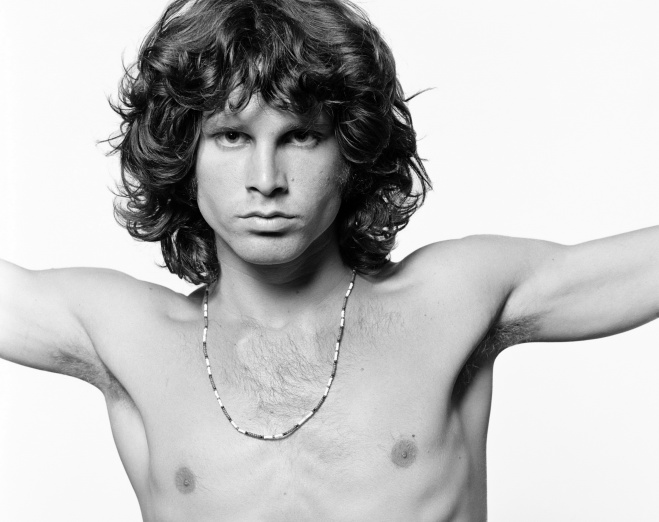 [youtube id=http://youtu.be/JskztPPSJwY]
[youtube id=http://youtu.be/JskztPPSJwY]
* * * * *
THE DOORS – FULL DISCOGRAPHY:
* * * * *
[youtube id=http://youtu.be/5OSUHmxjHak]
* * * * *  [youtube id=http://youtu.be/pLVt3SBWHyc]
[youtube id=http://youtu.be/pLVt3SBWHyc]
WHEN YOU’RE STRANGE [FULL DOCUMENTARY]
Narrated by Johnny Depp
For high-quality stream of the film, please join
La Revolucion Es Ahora (free membership for thousands of docs).
* * * * *
You might also like:
- The Doors at AMG All Music Guide
- The Doors of the 21st Century DVD/Live (2004) – With The Cult’s Ian Astbury on vocals
- Oliver Stone’s film starring Val Kilmer and Meg Ryan (download torrent)
Publicado em: 05/02/14
De autoria: Eduardo Carli de Moraes
